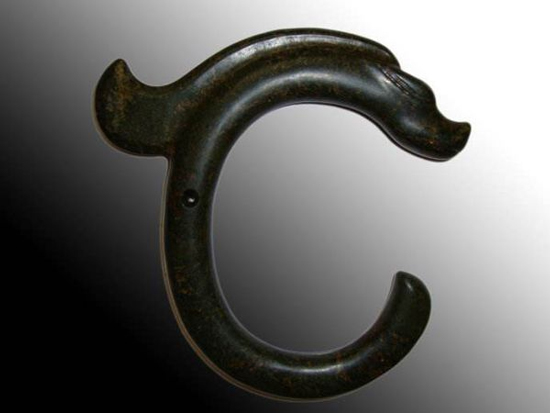As early as in ancient times, the dragon appeared in the East in a highly deified image. According to archaeologists, the dragon was a totem of ancient China and later became a symbol of the Chinese nation. The dragon pattern depicting the image of the dragon is one of the most vital patterns in Chinese traditional art. For thousands of years, regardless of the Central Plains or the northern border, many ethnic groups like dragons, and regard the dragon as a symbol of wealth and auspiciousness. Preserved in the museum, the earliest known era is the jade culture engraved in the Shang and Zhou dynasties from the 16th century BC to the 3rd century BC, pushing the history of dragon art a thousand or two years ago. The dragon-shaped jade was unearthed in the Chifeng area of ​​Inner Mongolia and the Hongshan cultural site in the mountainous area along the western part of Liaoning Province. Hongshan culture is a primitive culture of the Neolithic Age in northern China. One of Hongshan's cultural sites, the Zangta Village of Wengniute Banner, was first discovered in the spring of 1971. It is a "C" shape with vivid shape and high level of craftsmanship. This is a masterpiece dating back five or six thousand years ago. It is the earliest dragon-shaped jade in the Chinese era. In the past ten years, dragon-shaped and pig-shaped jade carvings have been discovered in the Bahrain Right Banner, the Aohan Banner and the mountainous areas along the western part of Liaoning Province. Northeast archaeologists Sun Shoudao and Guo Dashun believe that: Samsung Heila Biyulong and other Hongshan culture jade articles, once again proved with a solid archaeological material: the dragon originated from the primitive society; one of the original sources of the dragon head image, related to the pig head; The origin and birth of the dragon are closely related to the primitive agriculture; the emergence of dragons and related jade articles symbolizes the existence of certain levels and power concepts of the society at that time, and has the prototype of "ritual"; the birth and emergence of dragons means ancient China. The dawn of civilization has arrived. Lu Sixian, deputy director of the Inner Mongolia Cultural Relics and Archaeology Institute, systematically researched the Hongshan culture jade, and put forward some new insights. He pointed out that in the late Neolithic period in China, the primitive ancestors of the northwest and northern regions mainly used aquatic animals as totems. They used the "dragon" after the deification of various poultry or birds as the tribal emblem. The coexistence of dragon-shaped and bird-shaped decorations in the jade of Hongshan culture shows that the primitive peoples of ancient China have already had cultural exchanges, and that the emergence of the Chinese nation has already taken shape. Children'S Dress,Smocked Children'S Clothing,Childrens White Dress,Children'S Velvet Dresses NINGBO DHK IMPORT & EXPORT CO., LTD , https://www.dhkladywear.com